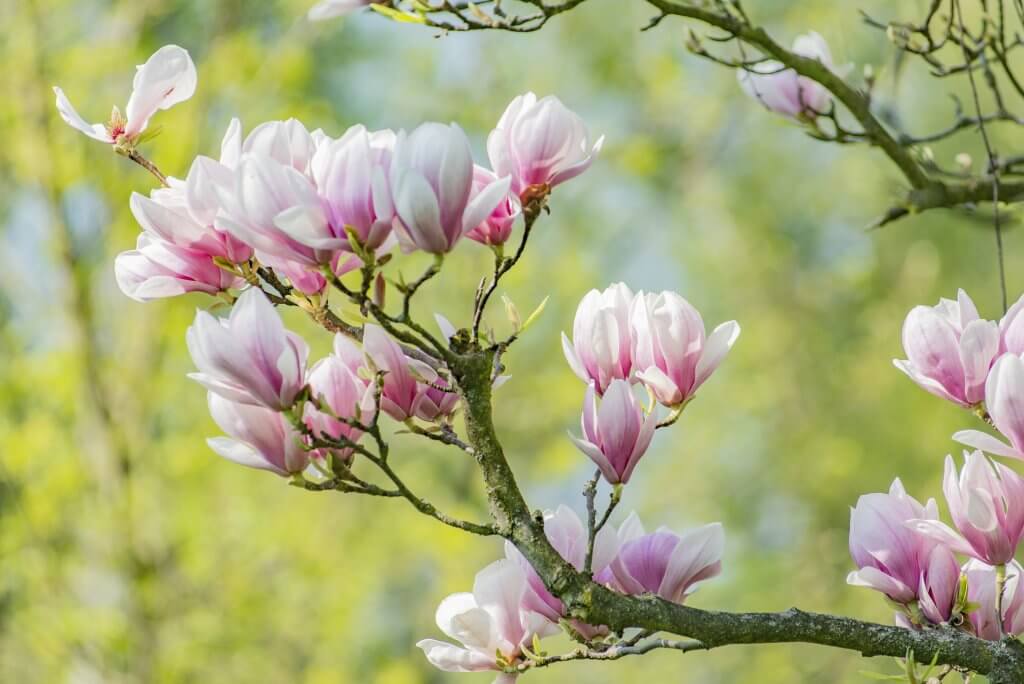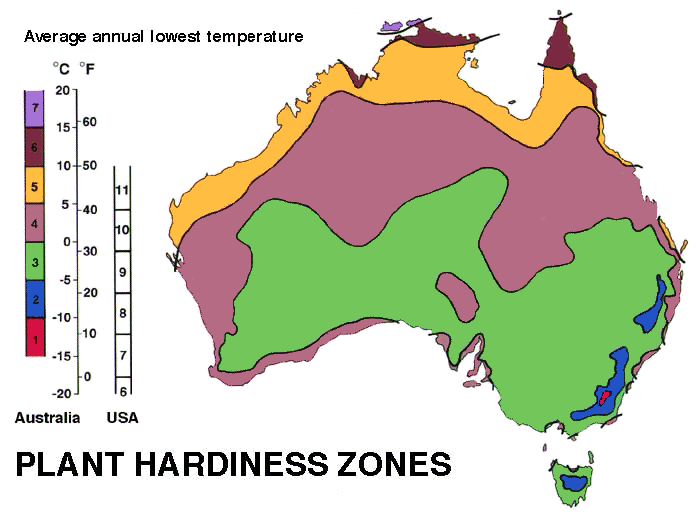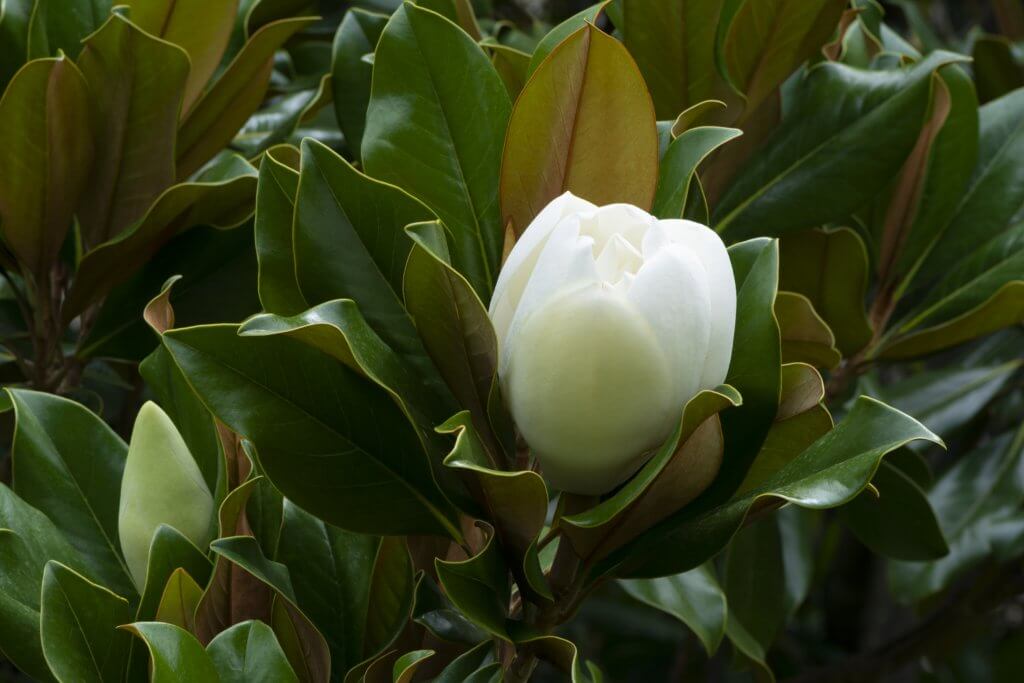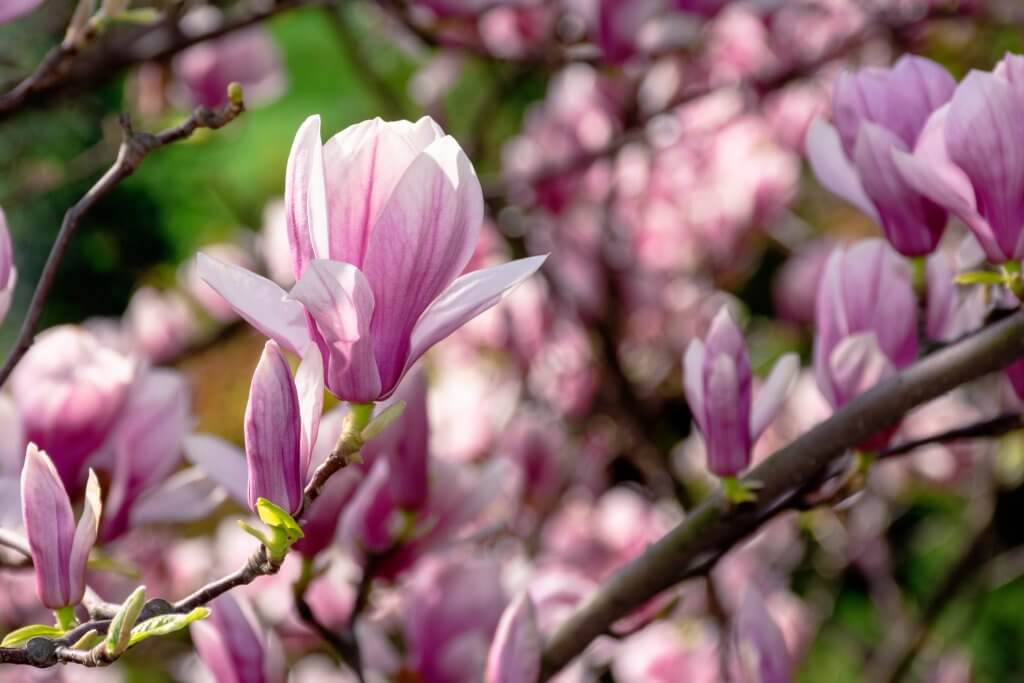There are few warm climate trees as popular as the Magnolia. With its delicate blossoms and thick leaves, Magnolias are one of the hardiest flowering plants. They provide a heady fragrance, gorgeous blooms, and attractive foliage throughout the year. Here’s everything you need to know about choosing and caring for your Magnolia.

Choosing a Magnolia Tree
Magnolias are hardy in zones 2 to 7, but there are more Magnolia species than many people think. Magnolia species vary depending on their blossoms, leaves, and size, and going down to a nursery and looking at their Magnolia trees may be the best way to choose the right species for you. Here are some of the most interesting varieties:
- Bigleaf Magnolia. Rather than small, glossy leaves, the Bigleaf Magnolia (which grows from 30 to 40 feet tall) has large, thick leaves that can be up to 32 inches in length. Understandably, this tree is only evergreen in warmer climates. The leaves aren’t the only thing large on this tree: the blossoms can also be up to ten inches in size. This is an incredibly flashy tree, which prefers full sun or partial shade.
- Lily Magnolia. At the other end of the spectrum is the Lily Magnolia, a small shrub-like Magnolia that grows 8 to 12 feet in size. This Magnolia is native to China but performs well in zones 4 to 7. It has sparse leaves and beautiful blossoms that grow upwards, and are tinted a reddish-purple to pink. It’s named because its blossoms are shaped like lilies rather than traditional Magnolias.
- Southern Magnolia. Found throughout the southern Americas, this is one of the most popular types of Magnolia. These Magnolias have the bright, white flowers that are usually associated with the Magnolia tree, with small leathery leaves, and bright fragrance. The Southern Magnolia can grow up to 60 to 80 feet and are best in full sun, which makes them particularly wonderful in hotter, sunnier climates.
There’s a huge diversity in leaf size and blossom size when it comes to Magnolias, and not every Magnolia tree even looks like a Magnolia—when one identifies a Magnolia out in the wild, it’s likely to either be a Southern Magnolia or similar. But all the above Magnolias share the major benefits of the Magnolia plant: they are hardy, easy to grow, attractive, and fragrant.


Where to Buy
UK
If you live in the United Kingdom, Amazon.co.uk is where you should buy your Magnolia trees and seeds. With over 500 plants and seeds available, Amazon is the one-stop-shop for Magnolias delivered to your door. Click here to buy Magnolias online.
Australia
If you live in Australia, you can buy Magnolia seeds on eBay and have them delivered to your door. Click here to buy Magnolia seeds online. If you are after mature plant your local nursery is the place to go.


Planting Magnolias
Magnolia trees are an investment. Whether you’re planting a small shrub species or a tall tree, they’re going to become a focal point for a long time to come. Magnolias live long and usually grow quite large unless you have purchased a dwarf variety like a Teddy Bear Magnolia. The best times for planting are Autumn or Spring, though Autumn planting should be avoided if you are in an area with colder winters.
First, plant your Magnolias in areas where they will get a lot of sun. They prefer full sun, though they can grow in partial shade. Give your Magnolias enough space to grow; if your Magnolia is going to grow 80 feet tall, you want them to be spaced equally far away from other trees (in other words, 40 feet away at minimum). The root ball of a tree is generally just as large as the visible portion of the tree.
To plant your Magnolia tree or shrub, dig a hole twice as large as its root ball, and spread its roots when you backfill the hole. Water thoroughly. Fertiliser shouldn’t be added during the first year, though you may want to add peat moss and compost to the soil to increase its acidity. Support the Magnolia with stakes as it grows.


Caring for Magnolias
Magnolias are resistant to many types of pest and disease, they do well even in hot and dry climates and ultimately require very little care. This is one of the reasons that Magnolias are so popular. Once you plant a Magnolia, you may need to take care of it to make sure that it roots well and begins to grow. Once your Magnolia begins to take off, however, you will need to do very little to keep it healthy.
During the first few months of growth, make sure that your Magnolia gets at least an inch of water a week. Fertilise your Magnolia a year after planting, for the next few years, at least until the Magnolia begins to take off on its own.
Once your Magnolia has reached a few years of age, it shouldn’t need any additional care. Magnolias tend to be drought-resilient, though you may want to add water during, particularly lean periods. Otherwise, the Magnolia should continue to grow steadily throughout the years. Watch out for stunted growth and other problems that could indicate pest or disease.
Avoid pruning your Magnolia too aggressively. In general, Magnolias should be pruned when young, and do not take to pruning well when older.


Common Problems with Magnolias
As mentioned, Magnolias really don’t experience a lot of issues. They are disease and pest resistant, and they grow to fantastic sizes. But there are still some issues that Magnolias can face, and they need to be addressed quickly for a healthy, attractive Magnolia.
- Wood rot. If certain areas of your tree appear to be wilting and damaged, you may be experiencing wood rot. The one area that is susceptible to damage on the Magnolia is the bark, and the wood underneath can rot and make the tree sick. Wood rot often requires that the tree undergo “surgery” and that requires the help of a professional. However, once the wood rot is cut out properly, the tree may be able to recover.
- Leaf spots. Leaf spots can be caused by particularly harsh summers, pests, or fungus. Look at them carefully. If there appears to be a fungus on the leaves, remove affected leaves, and remove debris around the tree itself. For pests, standard pest treatment can be used. If it’s sun damage, it shouldn’t adversely impact the tree in the long term.
- Cankers. When the bark around the Magnolia becomes damaged, they can experience infections. Cankers can kill off healthy branches and, like wood rot, they need to be cut out of the tree and otherwise addressed to make the tree healthy again.
Magnolias are an excellent choice for those who want a grand, flowering shrub or tree in their yard. Despite the wonderful fragrance and the delicacy of the blossoms, they are very hardy and do well in otherwise harsh, hot climates. As long as you care for your Magnolias properly, they can live within your yard for decades and potentially grow to nearly 80 feet tall depending on species. The proliferation of small shrubs and small trees also makes Magnolias suitable for smaller areas too.
[elementor-template id=”4604″]
[elementor-template id=”6387″]
